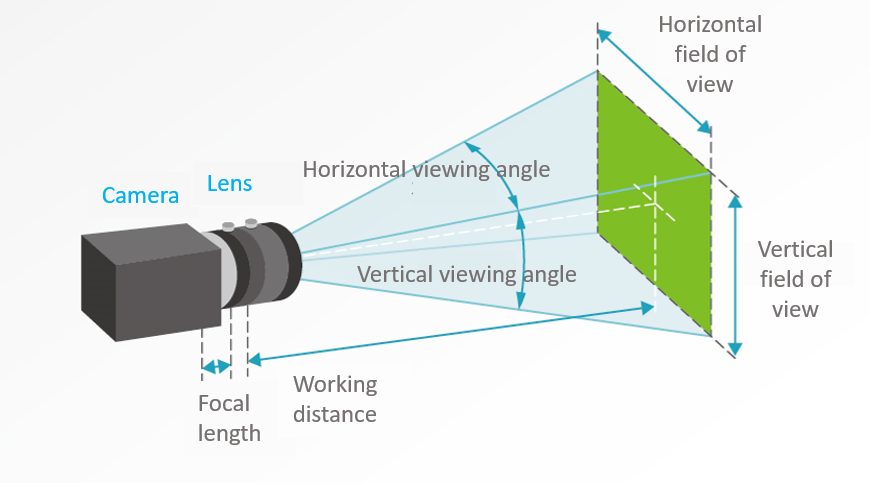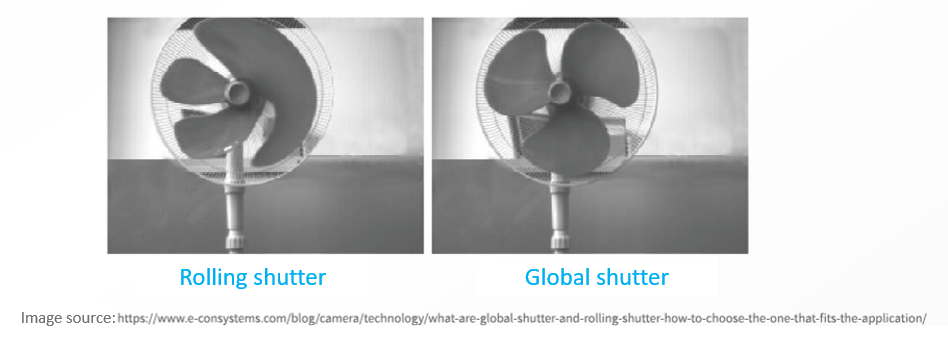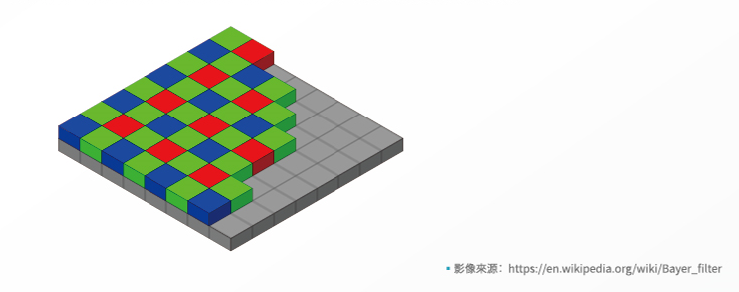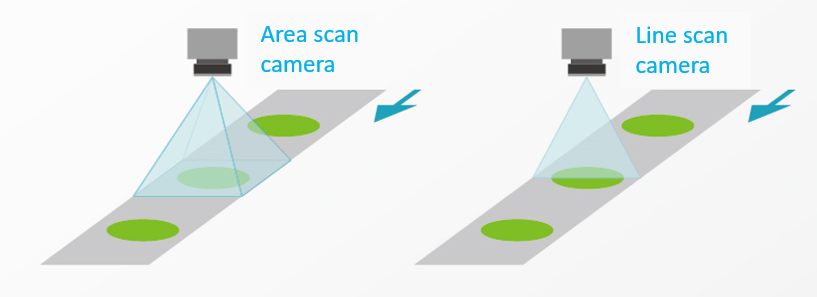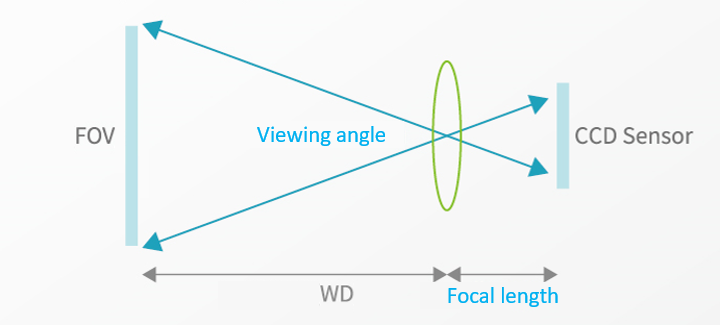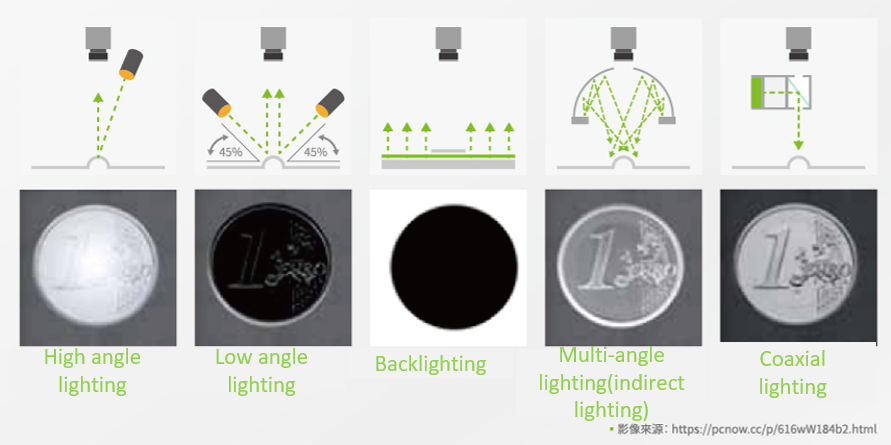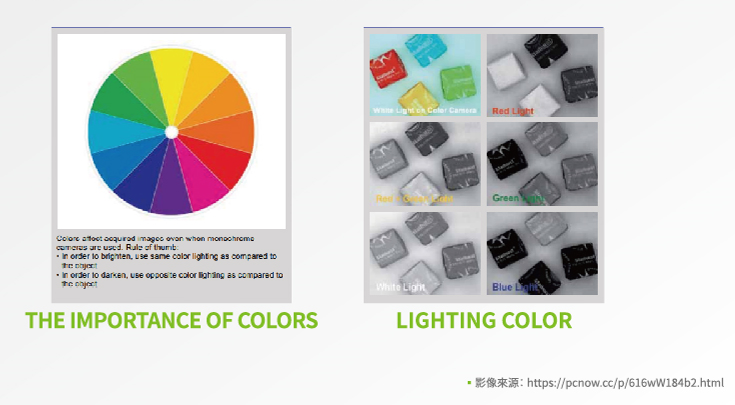Table of Contents
Examples are valid for:
TMflow Software version: 1.76.6300 or above.
TM Robot Hardware version: All versions.
Other specific requirements: None
Note that older or newer software versions may have different results.
Camera and lens #
Camera shutter #
-
Rolling Shutter :
When a rolling shutter camera exposes, it reads pixels line from top to bottom, so when taking pictures of moving objects, the image will appear distorted.
-
Global Shutter :
Whenn a global shutter camera exposes, the sensor reads all pixels simultaneously. It is suitable for capturing dynamic objects, but the price is higher.
Photosensitive element #
- A color camera uses a Bayer filter to create color images. Each pixel on the sensor has one of RGB color sensors, so it can only record the value of a single color. The values of the other two colors are obtained by interpolating the values of adjacent pixels.
- The pixels of the monochrome camera sensor absorb all the light intensity, and each pixel receives up to 3 times more light than the color camera, so the monochrome camera performs better in dark environments.
Area scan and line scan cameras #
- An area scan camera can capture all the pixels on the sensor at once, so it can directly image an area in one shot.
- A line scan camera has only one row of pixels on the sensor, but it has a very fast shooting speed. If you want to perform high-resolution surface inspection on a large area or a cylindrical object, you would choose to use a line scan camra.
Lens selection #
The focal length of industrial camera lenses is rough divided into 8mm/12mm/16mm/25mm/35mm/50mm/75mm,the larger the values, the smaller the viewing angle.
- Focal length = (WD * SensorSize) / FOV
- Viewing angle = 2arctan(SensorSize/2f)
CCTV Lens and Telecentric Lens #
- CCTV Lenses have a viewing angle, and when the working diatance is increased the object will appear smaller and cause parallax.
- Telecentric lenses have a fixed zero viewing angle, which can eliminate parallax. No matter what the distance of the object is, the field or view of the telecentric lens remains unchanged.
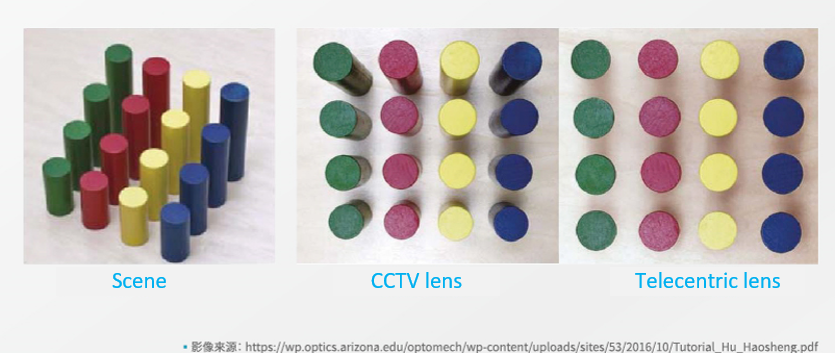
Light source #
- The light source is used to effectively image the object in the camera and distinguish it from the background as much as possible. The correct choice of light source type, position and angle will directly affect the success, accuracy and speed of the vision recognition system.
- Consider the color of the light source and the background. Using a light source of the same color as the object will make the image brighter, while using a light source of the opposite color will make the image darker. Red light has strong penetration and is suitable for detecting objects with poor light transmisstion, Blue light has strong reflection and is suitable for detecting fine features on the surface. Generally, colored light is often used with black and white cameras.

